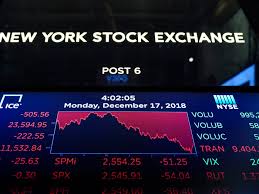The largest sovereign wealth fund in the world, Norway’s, had a loss of 1.68 trillion Norwegian kroner ($174 billion) in the first half of 2022 due to a turbulent six months for stock markets in general.
During that time, the $1.3 trillion fund returned a negative 14.4% as stocks and bonds dramatically reacted to concerns about a worldwide recession and rapidly rising inflation. However, Norges Bank, the nation’s central bank, reported that the fund’s return, which amounted to 156 billion kroner, was 1.14 percentage points higher than the return of the benchmark index.
High inflation, rising interest rates, and the European war have all characterized the market. Equity investments have decreased by as much as 17%. With a return of -28 percent, technology equities have performed particularly poorly, according to Nicolai Tangen, CEO of Norges Bank Investment Management.
Fixed income investments and unlisted renewable energy infrastructure had declines of 9.3% and 13.3%, respectively, while the fund’s return on equity investments fell 17%.
The fund’s fortune is based on Norway’s enormous North Sea oil and gas deposits. After the fund made significant investments in wind power in recent years, the energy sector was the only one that did not see negative returns.
“The energy sector returned 13% in the first half of the year. Oil, gas, and processed goods have all witnessed significant price hikes, Tangen continued.
According to Economist Intelligence Unit analyst Matthew Oxenford, NBIM’s (Norges Bank Investment Management) performance is “symptomatic” of a bigger trend that affects most significant investment funds.
Global financial markets saw substantial turbulence in the first half of 2022, and most diversified funds have had value decreases, according to Oxenford.
“Globally, much of this decline was driven by aggressive monetary tightening by central banks, which led to a sharp decline in investment in fast-growing firms in high-growth sectors like tech, with Meta being the largest single source of loss in NBIM’s portfolio,” he said. “As the return on safer investments increased and the global pool of high-risk investment shrinks.”
The loss comes at the same time as the U.S. stock market’s worst first half since the 1970s.
Oxenford predicted that the fund will emerge from its dire financial situation.
Although the exceptionally high growth rates we saw in 2020 and 2021 are unlikely to return because global central bank interest rates aren’t likely to return to the near-zero levels seen during the pandemic, he added, “NBIM is likely to weather this storm given that it is highly diversified and pursuing a longer-term investment strategy.”
The major U.S. indices were severely impacted by inflation, interest rate increases, and the conflict in Europe, with the Dow Jones Industrial Average losing more than 15% in the first six months of the year, the S&P 500 dropping more than 20%, and the Nasdaq Composite dropping almost 30%.


















